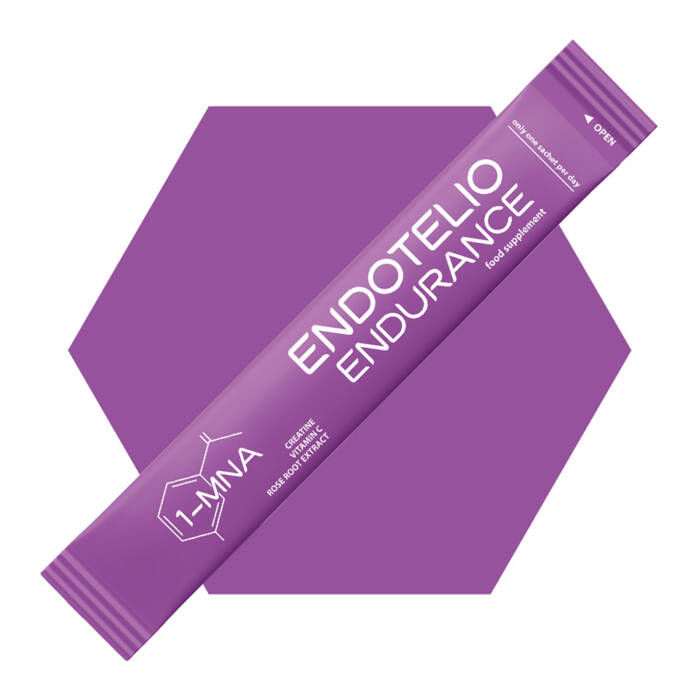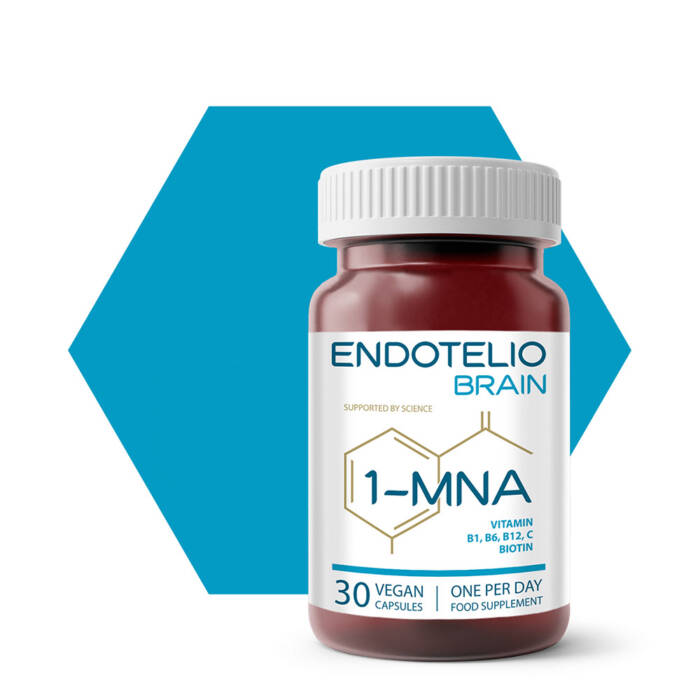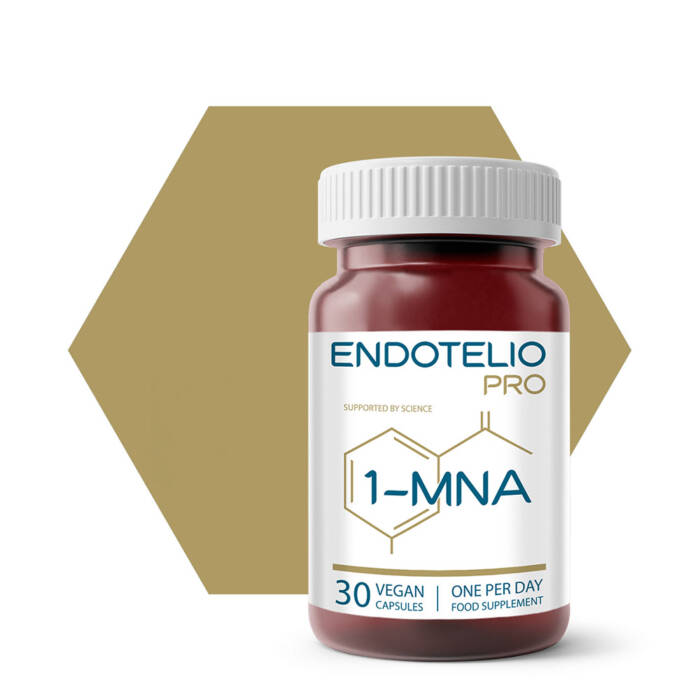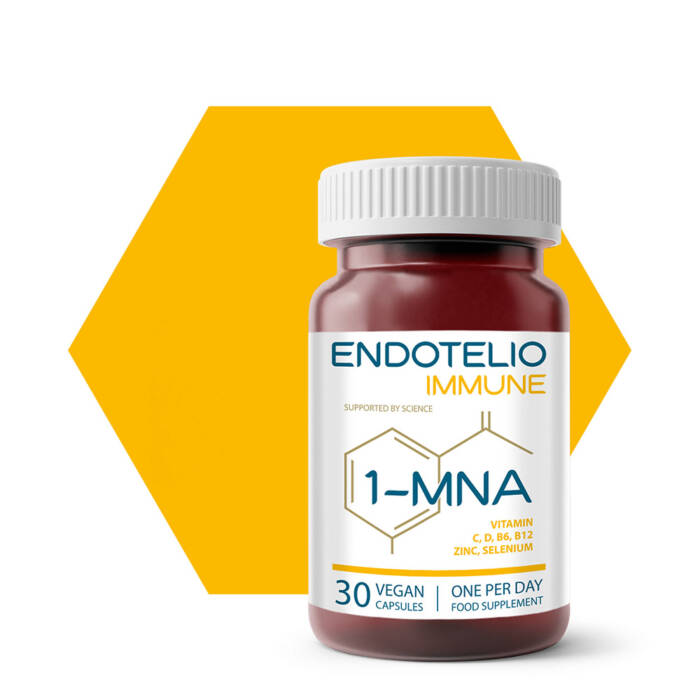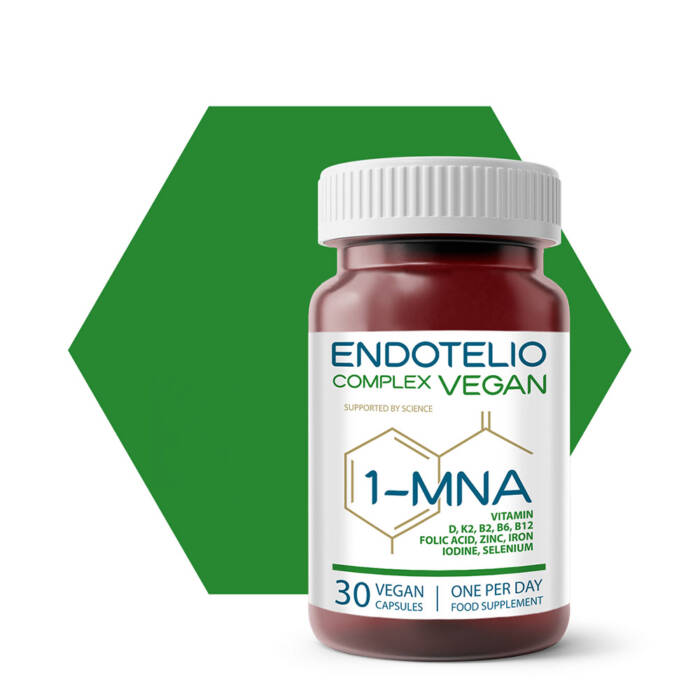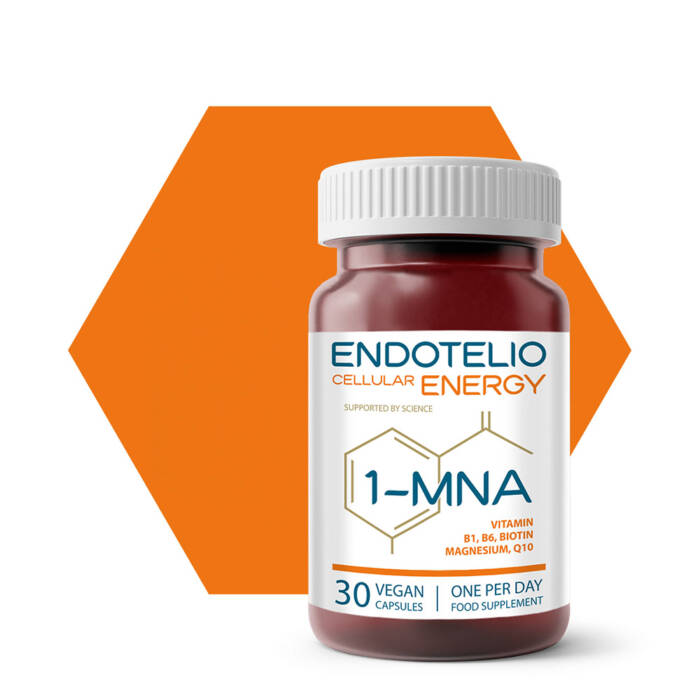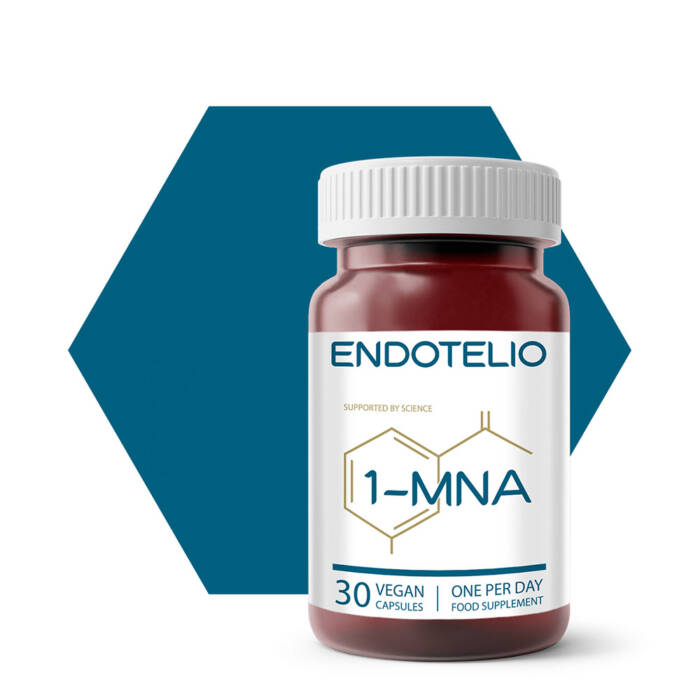We create dietary supplements
based on the innovative 1-MNA molecule
Many years of research have allowed us to create products under the ENDOTELIO brand,
enabling us to influence the quality of life of our body’s cells.
NAD+ optimization
more energy
increased physical performance
improved focus
sirtuin activator
faster cell regeneration
protection against stress
enhanced immunity
Why Endotelio?
ENDOTELIO supplements are crafted with passion by experts with your well-being and safety in mind.
Our supplements are manufactured in the EU in compliance with GMP and HACCP standards, based on the seven principles …
OUR PRODUCTS
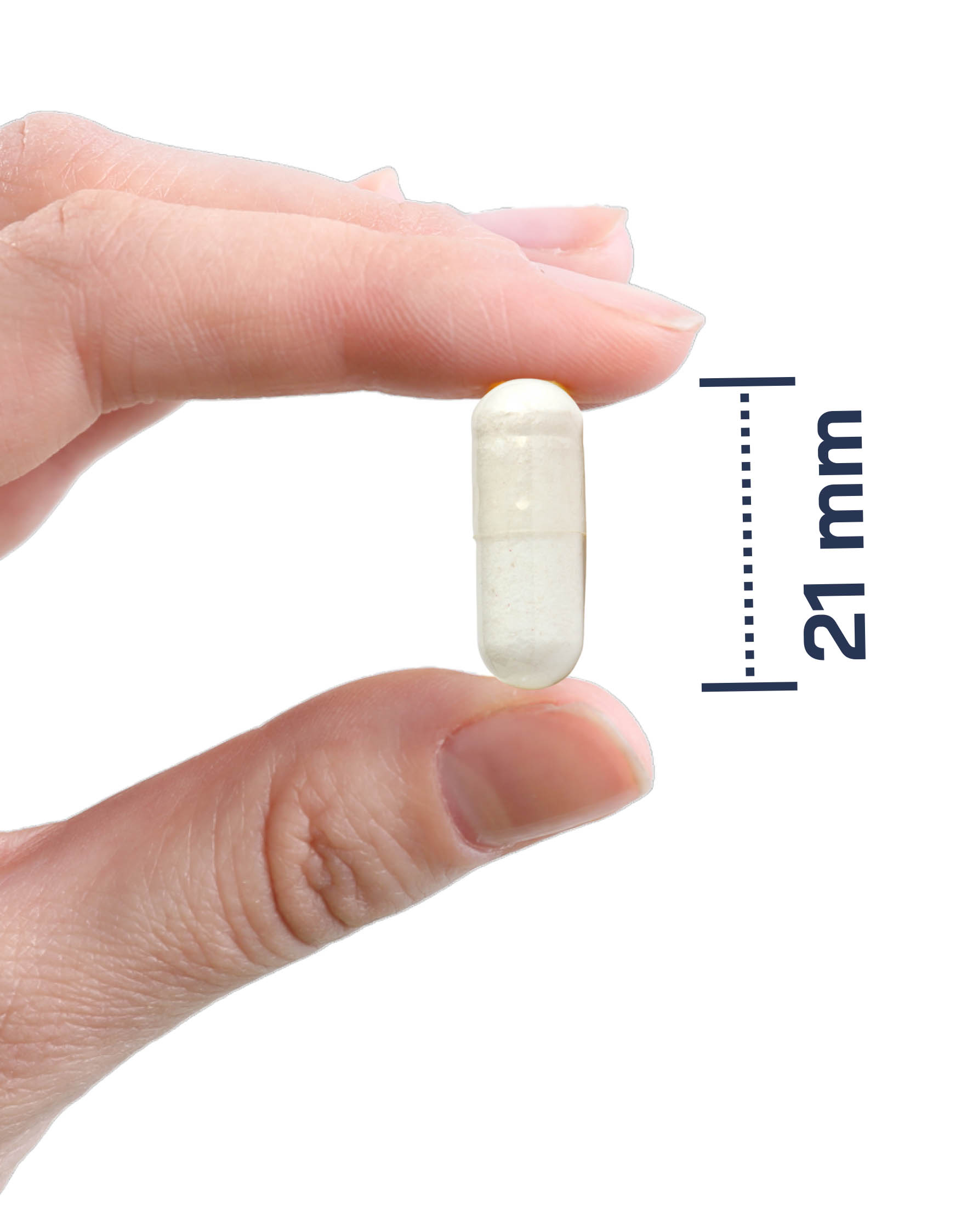
1-MNA
artificial
dyes
flavor
enhancers

Ground-breaking
scientific discovery
The discovery of 1-MNA is the result of many years of workat various research sites all over the world. Scientists from the United States, Germany, Switzerland, Spain, Poland, Sweden, Denmark, Japan, China and Australia have conducted hundreds of studies on the 1-MNA molecule.

research & innovation

sites worldwide

publications
1-MNA in nature
1-MNA occurs in nature and can be found in a few food products. The richest known natural sources of 1-MNA are Wakame brown algae (Undaria pinnatifida) and green tea leaves (Camellia sinensis).
OUR BRAND AMBASADORS

Magdalena Gąbka
i Marcin Górecki
PKO Everest
Expedition 2025
Their friendship, shared passion for mountains, and pursuit of dreams began at the north face of the Eiger, where they first met. Together, they are now striving to achieve the Seven Summits – the highest peaks of all continents. Their next goal is the Carstensz Pyramid in Indonesia, followed by the ascent of Mount Everest, but their ambitions don’t stop there. They have already completed the extreme 100 km Harpagan orienteering race, surpassed Everest’s height by climbing the 42 floors of Warsaw’s Skyliner 55 times within 19 hours, and finished the 80 km Lavaredo Ultra Trail.

Olga
Kelm
IFBB Bodybuilding
World Champion
As a World Champion, Vice European Champion, and multiple Polish Champion, I uncompromisingly adhere to the principles of healthy nutrition and proper supplementation, which makes choosing the ENDOTELIO supplement based on the innovative 1-MNA molecule a natural step for me.
When deciding on this supplement, I was guided not only by the fact that it is backed by advanced scientific knowledge but also by the belief that the right combination of diet with innovative solutions is crucial for my physical condition. The molecule at the heart of this supplement is the result of years of research conducted by numerous international research centers. I am glad that I have made the right choice in taking care of health and fitness.”

Magdalena
Makarowska
Clinical dietitian
and psychodietitian
Promotes healthy habits, runs educational and culinary workshops and lectures at the university. Author of guides on a healthy lifestyle, basing her work on current medical knowledge. As an ambassador for Endotelio, she supports conscious supplementation and regularly tests innovative solutions, including 1-MNA, to share reliable knowledge and real effects.
OPINIONS
A perfect
gift idea
for a loved one
Maciek
I started supplementation
3 months ago, and it was
the best decision.
Olka
Attractive prices.
Pure 1-MNA is
the best supplement!
Magda
Great supplements,
amazing results –
highly recommended!
Joanna
Endotelio 2025. All rights reserved. Site by Dagson Media.

